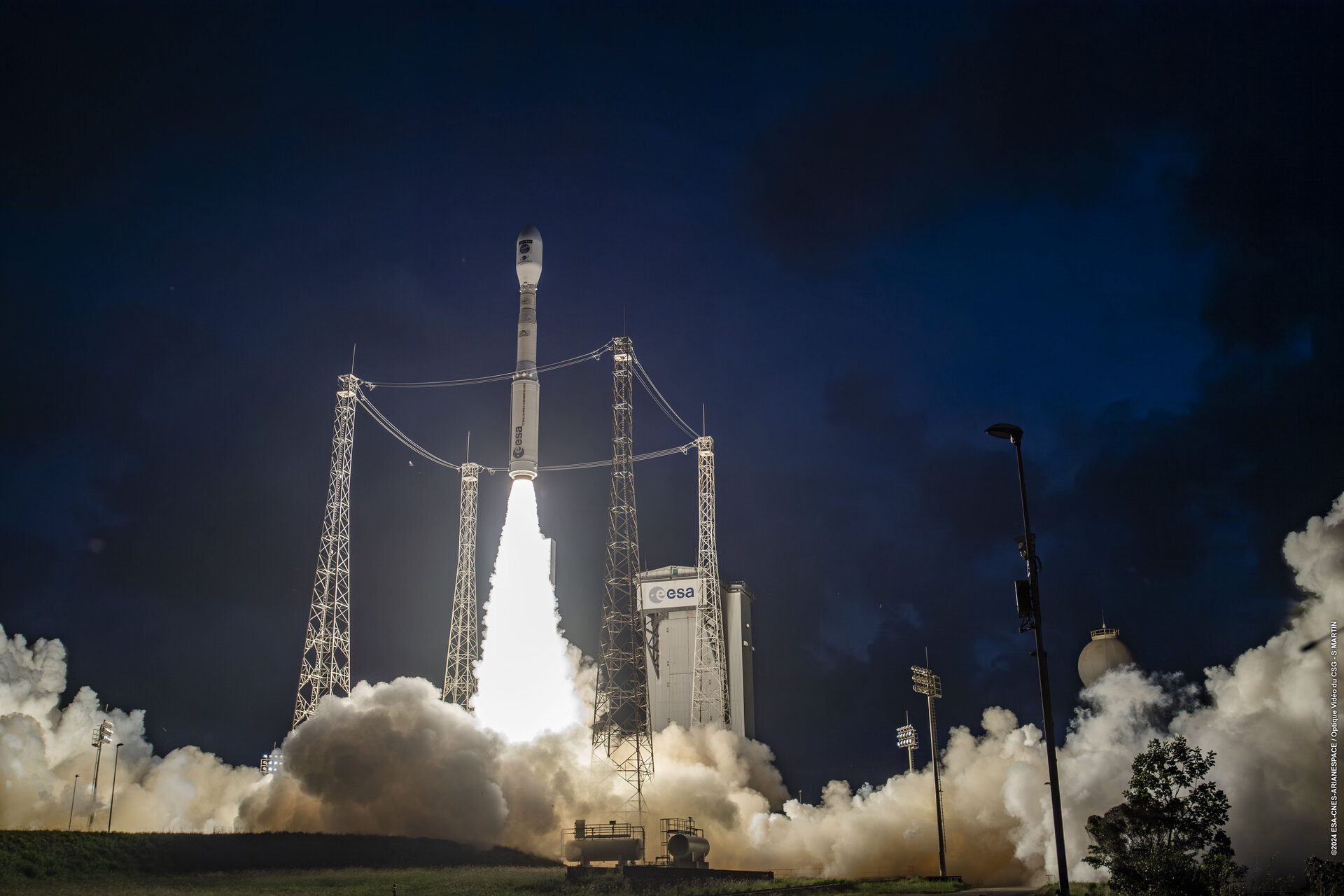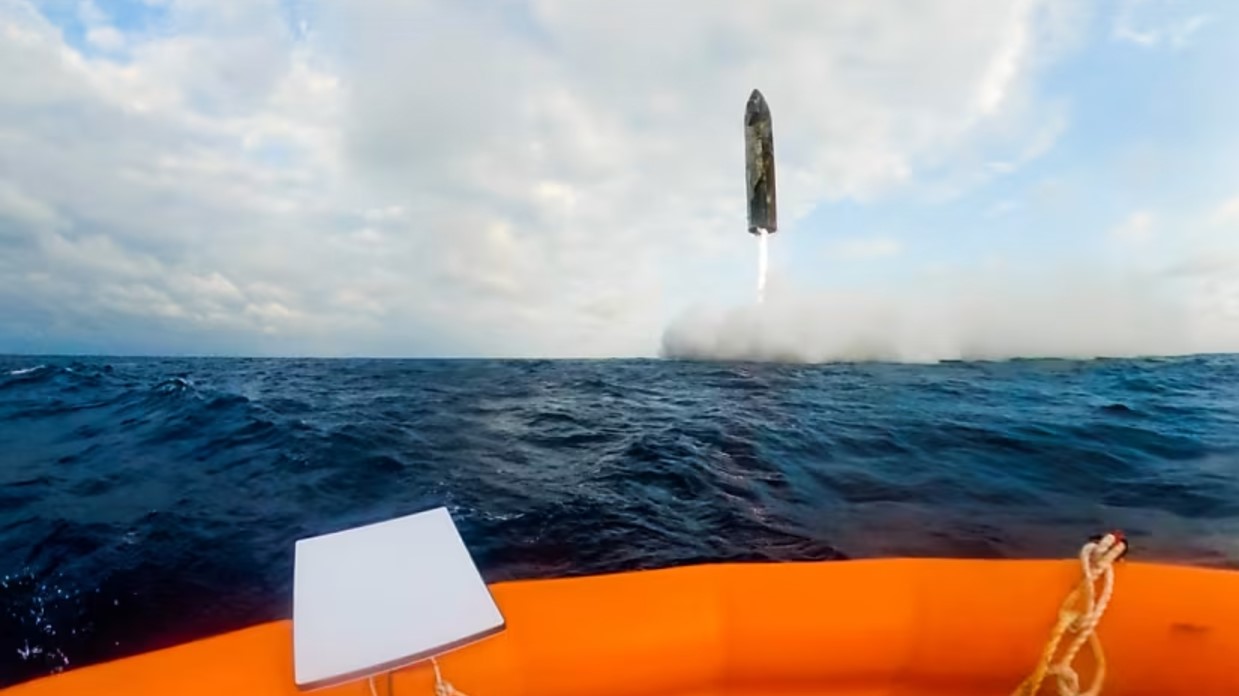The compromise “Eurofudge” decision, in late 2012, by the European Space Agency (ESA) both to pursue the ME upgrade to the Ariane 5 launch vehicle and to develop its solid/liquid based Ariane 6 successor looks likely to unravel. At a meeting between the industrial concerns in March, a divide remained over not only the configuration Ariane 6 should take, but also whether it should go forward at all. The negotiations are being influenced by commercial and national interests, as well as doubts about the competitiveness and development costs of Ariane 6.
As they strive to build launch vehicles that can compete with the low-cost Falcon 9V1.1 and Falcon 9 Heavy launch vehicles from SpaceX, both Johann-Dietrich Woerner, head of the German Aerospace Research Establishment (DLR), and Jean-Yves Le Gall, President of the French Space Agency CNES (and former leader of ESA’s launch provider Arianespace), have wondered openly whether ESA nations can afford the Midlife Evolution (ME) development of Ariane 5 while starting development of Ariane 6. This stems from the original compromise agreement to pursue the ME upgrade to Ariane 5, which the Germans wanted, while also committing to the development of Ariane 6 under the solid first-stage/boosters/second-stage, cryogenic upper-stage configuration desired by the French.
Space News reports that Woerner has also expressed doubts about the configuration of the new Ariane 6 rocket, suggesting it should have a liquid oxygen (LOX)/liquid hydrogen cryogenic first stage (instead of solid rocket first and second stages) and a LOX/liquid hydrogen cryogenic upper stage, using just solids for the auxiliary boosters. The Japanese Aerospace Exploration Agency (JAXA) has selected this two cryogenic-stage configuration using up to six strap-on solid boosters (depending on the payload mass) for its new H-X successor to the H-IIA and H-IIB rocket series. Apart from reducing development costs, such a configuration is noted for its flexibility. Woerner openly admits that this change would also be good for German industry.
The Ariane 5 ME upgrade, which Woerner fought for and won, involves building a new restartable cryogenic upper stage, which would increase the Ariane 5’s payload to Geosynchronous Transfer Orbit (GTO) to 12,000kg. This would allow two large communications satellites to be carried to GTO instead of the current arrangement of one large and one smaller satellite, which remains problematic for scheduling/pairing reasons. The compromise between France and Germany was that ESA would commit to the Ariane 6 as Europe’s next launch vehicle with the cost-saving proviso that the newly developed crygoenic upper stage would be used by both Ariane 5 ME and the new Ariane 6.
The idea of the new Ariane 6 rocket was to get the Arianespace per satellite launch price down to Eu70 million ($94 million). The problem is that even at this price, it will struggle to compete with the Falcon 9 fielded in the V1.1 version by the US firm SpaceX (Space Exploration Technologies), with its official sticker price of only $56.5 million. Currently, the launch price per satellite on an Ariane 5 is usually in the range of $100-137 million depending on the size of the spacecraft being carried.
So even after the Ariane 6 economies, it will probably still be cheaper to fly on the Falcon 9. Given the expected €4 billion total for development and infrastructure costs, some are now openly asking whether Ariane 6 is really worth doing.
For the time being, the €1 billion Ariane 5 ME upgrade has its ESA supporters, not least for allowing the rocket to continue competing in the commercial GEO satellite launch market. It can do so only because Ariane’s new upstart competitor can only fly smaller satellites; that is until its Falcon 9 Heavy, which can fly heavier satellites, becomes operational. In addition, Ariane 5 as a launch vehicle can still trade on its quality and reliability rather than on its price. However, as the Falcon 9 family gets more experienced, this second advantage is likely to disappear, as it surely would if Ariane 5 had another launch failure.
It is not just its high cost and lack of competitiveness that have encouraged doubts about Ariane 6. ESA and Arianespace are keenly aware that launch vehicle technology amongst its competitors is rapidly moving forward. In a bid to cut costs further, SpaceX is moving towards reusability for its Falcon 9 rocket family. As it plans an eventual reusable first stage, using LOx/kerosene as its rocket propellants, it is also experimenting with rocket engines using LOX/methane as a cleaner propellant combination.
Of course, using solid rockets for the first stage of Ariane 6 would preclude any reuse of that rocket. However, the LOX/liquid hydrogen combination has been used before on a reusable engine – most famously on the Space Shuttle main engine – and using a cryogenic engine would at least give ESA the option of examining first-stage reusability.
Waiting in the wings lest Ariane 6 should falter is the UK Government, which is championing Reaction Engines’ LOX/liquid hydrogen burning, fully reusable Skylon single-stage-to-orbit space plane design. The charm offensive by the Brits continues. In January, Woerner and his DLR rocket expert colleagues, along with UK Science Minister David Willetts, visited the Oxfordshire-based rocket research firm to examine the heat exchanger hardware for Skylon’s air-breathing SABRE rocket engines. On current projections, Skylon, with a European-built reusable transfer “tug”, should be able to launch satellites to GEO for one fifth of SpaceX’s list price. Reaction Engines famously bid its Skylon against Ariane 6 to be ESA’s next launch vehicle. It was an outsider, but the technology was praised by ESA, although it went for the French-technology-dominated option..
Comment by David Todd: Expendable Ariane 6 is a backward step, reusable rockets are the future
Building the Ariane 5 ME as an interim step pending the development of a reusable launch system was a sensible plan. There might even have been some merit in building the costly and unambitious Ariane 6 design as an interim launch vehicle ahead of building a reusable rocket. However, the worst of all choices would be to try to do both the Ariane 5 ME and the Ariane 6. , The sheer cost would mean pushing reusability for European space launch operations even further into the future. Unfortunately, this “Eurofudge” option, designed to keep the peace between French and German sides, was the one that was chosen.
For the time being the compromise holds. The Ariane 5 ME upgrade looks likely to go ahead with the decision due in December. In the meantime, the configuration of Europe’s official next launch vehicle, Ariane 6, will be finally decided this summer. While Ariane 6 stays alive for now, it will only be when ESA finally decides to cancel Ariane 6’s development in favour of a modern and cost-efficient reusable launch vehicle that Europe will be certain of staying in the commercial space launch business.
Thankfully, even ESA bureaucrats are now to starting realise that the Ariane 5 ME/Ariane 6 development compromise is not only unaffordable but an unwise way to spend Europe’s money. Just as Europe’s other major aerospace project, Eurofighter, is starting to look distinctly “old hat” compared with more modern “stealthy” fighter designs, so the expendable Ariane 6 is already looking like last-generation rocket technology.
Meanwhile, Reaction Engines is looking beyond Europe and has signed a technology sharing agreement with the US Air Force. Several US aerospace firms are believed to be interested in the Skylon technology. While US/European cooperation has been suggested for the development of launch vehicles – not least by Arianespace head Stephane Israel, who suggested “Americanising” the Ariane 5 in an attempt to gain access to the US military launch market – this is not thought to be a realistic option in the near future.
The author of this article has a small financial interest in Reaction Engines Limited.






